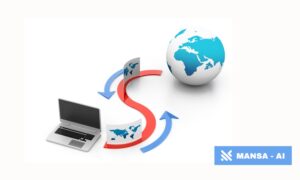Today’s lending institutions face a challenge: improve and grow their lending portfolio without taking on more risk. Traditional lending models tend to fall short and miss creditworthy borrowers. They don’t paint a full picture of the borrower, often locking a certain segment of the population out of loans, simply because these people don’t fit the traditional profile. This outdated judging system doesn’t just affect borrowers; it prevents institutions from growing their portfolios and tapping into a larger customer base.
That’s what makes AI lending platforms a game-changer. They can deliver more data at faster speeds and with more accuracy. This article explores just how AI-powered lending networks can help financial institutions approve more borrowers.
The Limitations of Legacy Lending Models
Legacy lending models have been the backbone of lending institutions for decades. And while they have provided structure and a certain degree of efficiency, these systems are increasingly becoming outdated, especially in an ever-evolving digital and technological landscape.
One of their major limitations is their overreliance on credit scores and W-2 incomes. However, this scoring system doesn’t account for the complexity of many people’s financial lives, such as gig workers or small business owners. People who don’t fit into the rigid definitions of the “ideal borrower” and rely solely on 1099s, for example, may be excellent potential borrowers but are often considered high risk by the traditional lending models.
Another limitation of legacy lending models is their inability to adapt to modern data sources, such as bank statements showing consistent savings, utility payments, or even gig income. These data sources can give a more complete view of a borrower’s financial behavior.
These outdated models can also result in inefficiencies. Errors and biases may creep in when manual labor is involved. Manual underwriting slows down the process as well, leading to longer wait times.
What Makes AI-Powered Lending Networks Different?
Traditional lending models rely on a rigid set of rules to determine who is a low-risk candidate for a loan. AI-powered lending networks, however, take a more unique approach when assessing borrower risk.
They Use More Data
By using more data, such as transaction histories or saving habits, AI-powered platforms get a more detailed picture of borrowers. This broader set of data allows financial institutions to tap into communities or sectors that traditional models may have overlooked.
They Continuously Learn
AI-powered platforms get fed massive amounts of data on an ongoing basis, allowing these platforms to continuously learn. In turn, AI-powered platforms use algorithms to identify patterns or red flags. In other words, these platforms keep getting smarter, refining their methods and making accurate predictions.
They Can Make Predictions
With their large datasets, AI lending models can make predictions based on previous data and current market conditions. This helps lenders tap into new, untapped industries.
The Impact on Approval Rates
One of the most powerful benefits of AI lending is its impact on approval rates: lenders can say “yes” to more borrowers without increasing their risk exposure. Here is a breakdown of how this can happen.
Larger, More Accurate Data
AI lending can process large amounts of data and deliver a complete analysis within minutes. This, in turn, allows lenders to make fast, accurate decisions without worrying about inaccuracies or errors.
Broader Criteria
Traditional lending models take a cautious approach to lending. On the other hand, AI or digital lending assesses risk in a more nuanced way, casting its net wider. This less conservative approach accepts a larger pool of applicants—applicants that would have been considered high risk under more traditional guidelines.
Real-World Benefits for Financial Institutions
Digital or AI lending platforms offer myriad real-world benefits for financial institutions.
Higher Approval Rates Without the Risk
Because AI models can evaluate a larger set of data points, they can approve more applicants who would have been rejected under traditional lending systems. This translates into more loans and more revenue, without lenders taking on more risk.
Faster Decision Making
Tasks that were previously performed manually can now be automated. This shift can speed up the time it takes to underwrite loans, resulting in faster decision-making processes.
More Effective Risk Assessment
Digital lending models are continuously learning and refining their predictions. This leads to more accurate decisions and more effective risk assessments. Lenders can also identify subtle patterns that they would have missed with traditional lending models.
More Efficient Lending Models
By automating parts of the lending process, AI models free up valuable time, allowing lenders to improve strategies and customer engagement.
Looking Ahead: The Future of Inclusive Lending
As technology starts to play a major role in the financial world, speed, accuracy, and customization have become a priority. Borrowers want loan offers that realistically reflect their financial situations, and they expect instantaneous decisions. AI-powered networks can meet these demands, offering speed, adaptability, and intelligent decision-making.
While legacy lending systems find it challenging to keep up with the volume and complexities of diverse data, AI lenders can process large amounts of datasets within minutes. Plus, by continuously learning and delivering results in real time, AI models can help institutions improve their performance and effectively build their portfolios.
In short, AI or digital lending models are no longer optional additions. They are quickly becoming the cornerstone of modern lending institutions. Financial lenders can now uncover new growth opportunities, fine-tune their processes, and serve borrowers more efficiently.



































